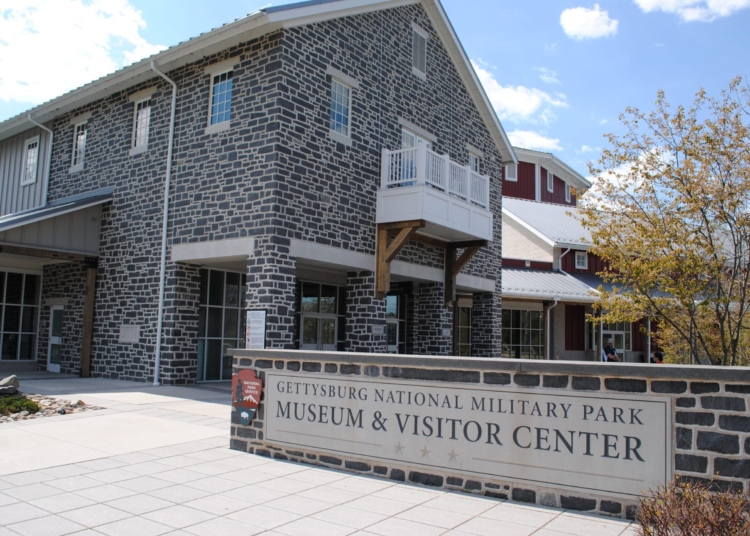Military history tourism is a specialized form of tourism that allows enthusiasts to explore and experience the rich history and heritage of military conflicts and warfare. It involves visiting battlefields, memorial sites, and military museums to gain insights into the strategies, sacrifices, and innovations that have shaped the world. Exploring battlefields provides a direct connection to past events, allowing visitors to witness the landscapes where battles were fought and gain a deeper understanding of the tactics employed. Memorials and cemeteries offer a somber opportunity for reflection and remembrance, honoring fallen soldiers. Military museums provide a wealth of information and hands-on experiences to educate and engage visitors of all ages. When planning a military history tourism trip, it is important to research, plan an itinerary, and book guided tours for a more enriching experience. Being respectful and mindful when visiting these sites is crucial, as they hold deep emotional significance for many. Overall, military history tourism offers a unique and engaging way to explore the past and pay tribute to those who have shaped our world.
From Battlefields to Museums: A Guide to Military History Tourism
Introduction
Military history tourism is a form of tourism that allows enthusiasts to explore and experience the rich history and heritage of military conflicts and warfare. From visiting battlefields and memorial sites to exploring military museums, this specialized form of tourism offers a unique opportunity to gain insights into the strategies, sacrifices, and innovations that have shaped the world.
Exploring Battlefields
One of the most popular aspects of military history tourism is exploring battlefields. These sites provide visitors with a direct connection to past events, allowing them to walk in the footsteps of soldiers, witness the landscapes where battles were fought, and gain a deeper understanding of the tactics employed.
Visiting battlefields such as Gettysburg, Normandy, or Waterloo takes you back in time, immersing you in the historical events that unfolded there. Guided tours and informational signage provide context and narratives, guiding visitors through the progression of the battle and explaining its significance. Through this experience, visitors can appreciate the tremendous sacrifices made by soldiers and the lasting impact of these conflicts on societies.
Memorials and Cemeteries
Another integral part of military history tourism is visiting memorials and cemeteries dedicated to fallen soldiers. These solemn places offer an opportunity for reflection and remembrance, honoring the individuals who fought and gave their lives for their countries.
Memorials can take various forms, ranging from intricate sculptures and plaques to grand monuments. They often serve as physical reminders of the sacrifices made during specific battles or wars. Popular examples include the Vietnam Veterans Memorial in Washington, D.C., and the Australian War Memorial in Canberra.
Visiting military cemeteries, such as Arlington National Cemetery, is a somber experience that allows visitors to pay their respects and understand the human cost of war. The rows upon rows of graves serve as a powerful reminder of the lives lost, making it a poignant and humbling experience.
Military Museums
Military museums provide a wealth of information on various aspects of armed conflicts, ranging from weaponry and equipment to uniforms and personal narratives. These museums often house an extensive collection of artifacts, photographs, and historical documents that shed light on the experiences of soldiers and the development of military technology.
From the Imperial War Museum in London to the Smithsonian National Air and Space Museum in Washington, D.C., military museums not only educate visitors but also give them hands-on experiences. Interactive displays, multimedia presentations, and guided tours provide a comprehensive understanding of military history while engaging visitors of all ages.
Planning Your Military History Tourism Experience
When planning a military history tourism trip, it is essential to research and plan your itinerary in advance. Consider the specific conflicts or time periods you are most interested in and choose destinations that align with those interests. Additionally, consider the time of year and weather conditions, as some sites may be more accessible during certain seasons.
It is also recommended to book guided tours when available. Expert guides can provide invaluable insights and narratives that enhance your overall experience. They can offer a deeper understanding of the battles, share personal stories, and answer questions you may have.
Finally, be respectful and mindful when visiting battlefields, memorials, and cemeteries. Remember that these sites hold deep emotional significance for many. Treat them with the utmost reverence and follow any rules and guidelines provided.
Conclusion
Military history tourism offers a unique and engaging way to explore the past and gain a deeper understanding of the impact of armed conflicts on society. From the battlefields that witnessed historical events to the memorials and museums that honor the sacrifices made, this form of tourism provides an opportunity to reflect, learn, and pay tribute to those who have shaped the world we live in today.













